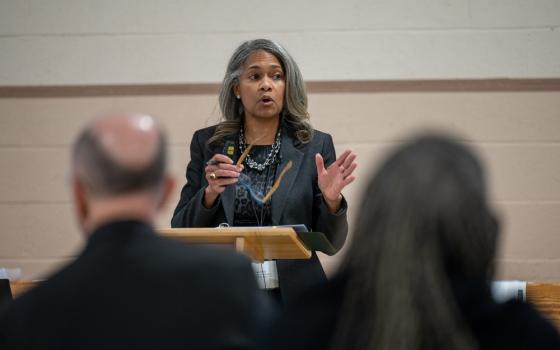I don’t recall why, but I was in the front row as Cardinal Joseph Bernadin delivered his “Seamless Garment” speech at Fordham in 1983. Looking back, it was an extraordinary event, as he voiced clear opposition to abortion, nuclear weapons, and the death penalty.
That day I asked Jesuit sociologist Joseph P. Fitzpatrick why, if the church had such a strong pro-life attitude, especially against abortion, was it not definitively against the death penalty? What was the difference?
His simple response: the presumed innocence of the baby and the presumed guilt of the criminal.
I didn’t like it then and I do not like it now, as the State of Connecticut is heads down the long road to its first execution since 2005. The case is more than “presumed guilt.” Steven J. Hayes confessed to some truly horrific crimes.
With an accomplice, yet to be tried, in July 2007 Hayes spotted the Petit family at a shopping mall near their upscale Cheshire, Connecticut home. Later, the two broke into the house, beat the father senseless, tied up the two daughters and took the mother to the bank, forcing her to withdraw $15,000.
At some point the father regained consciousness and went for help, returning to find his home in flames and his family dead. I’ll spare the worst of the details, but the mother was raped and strangled, and the couple’s 11-year-old and 17-year-old daughters were tied to their beds, doused with gasoline, and set afire. The story is so awful the prosecutor said the jury was “exposed to images of depravity and horror no human being should have to see.”
And so the People of the State of Connecticut, by a jury of peers, have determined that Stephen J. Hayes is guilty of six felony counts and should die.
The right of a nation-state to have a death penalty is fairly unquestioned. But the ability and willingness of that state to actually use it is subject to debate. According to the Death Penalty Information Center, the U.S. population is evenly divided between the death penalty and life in prison without parole.
Three questions: Does the death penalty work as a deterrent? Who will be the executioner? At what cost do we execute people?
Does it work as a deterrent?
Connecticut was always fairly sure about the death penalty. Between 1639 and 1937 it hanged 108 people. Then it got modern and used the electric chair for 18 more executions, up until 1995. Since then there’s been only one, by lethal injection.
I think it is pretty clear it did not work as a deterrent for the Petit family. Both criminals surely knew the penalty for their rampage -- Hayes spent most of his adult life in prison.
We can only guess if the Connecticut death penalty has curbed any other heinous crimes.
Who will be the executioner?
Assuming Connecticut uses lethal injection, who will actually do it? Who can do that?
Lethal injection involves setting an intravenous line and then using several injections to send a deadly cocktail of numbing and heart-slowing drugs coursing through the condemned prisoner’s veins until breathing ends, heartbeats cease, and there is no discernable brain function.
It is not typically performed by a medical specialist. A doctor is there to pronounce the prisoner dead.
Of course, when you think of it, lethal injection might be a bit of an advance over older methods like boiling, crucifixion, impalement, stoning, dismemberment, and burning. The modern, advanced United States has used firing squads and the electric chair in the not too distant past. But just about everyone opts for lethal injection these days.
How very civilized.
At what cost do we execute human beings?
You will often hear folks say they’d rather have the criminal executed, than support him in prison for the rest of his life. In fact, executions cost more than life imprisonment because the state (not the indigent prisoner) bears the cost of appeal after appeal.
According to The Palm Beach Post, Florida would save $51 million a year by eliminating the death penalty. The Dallas Morning News says each Texas death penalty case costs an extra $2.3 million above the cost of incarceration. And the Tennessee Comptroller says death penalty cases cost 48 percent more than life imprisonment trials.
But it’s not just money. I believe there is another cost to executions because our governments are executing people in our names. It is about how the very fabric of our society rips and frays every time an intravenous line is set to kill a human being.
Well after that December day when Cardinal Bernardin spoke at Fordham, I learned the term “Seamless Garment” originated with Dorothy Day’s friend Eileen Egan, one of the early pillars of Pax Christi and the Catholic Worker movement. That made perfect sense, and helped me better understand the speech.
The death penalty does not work, and we are each and all the executioners, at a terrible, terrible cost.
[Phyllis Zagano is senior research associate-in-residence at Hofstra University and author of several books in Catholic Studies. Her book Women & Catholicism will be published by Palgrave-Macmillan in 2011.]
Editor's Note: We can send you an e-mail alert every time Phyllis Zagano's column, "Just Catholic," is posted to NCRonline.org. Go to this page and follow directions: E-mail alert sign-up. If you already receive e-mail alerts from us, click on the "update my profile" button to add "Phyllis Zagano" to your list.




